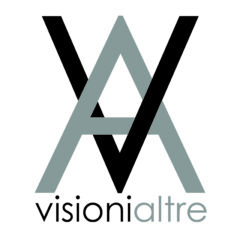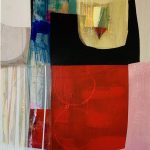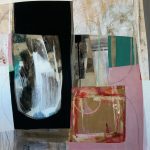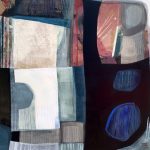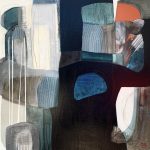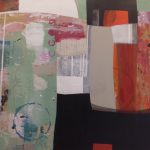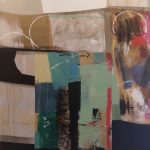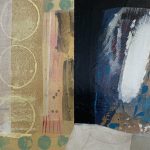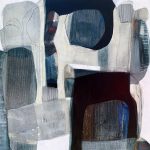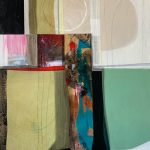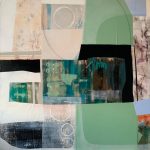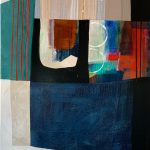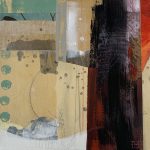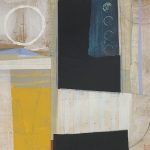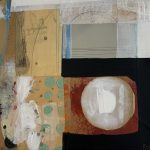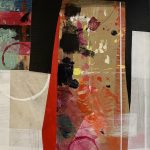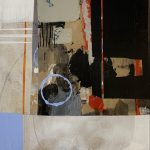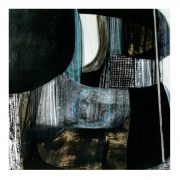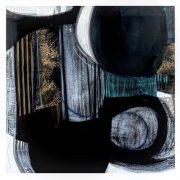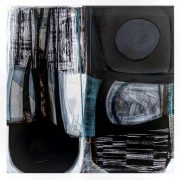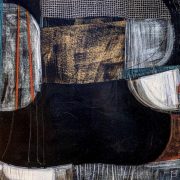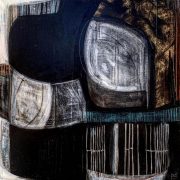CASTELLI DI CARTA – tra sogno ed utopia
Le opere dell’artista Elisabetta Marchese “ CASTELLI DI CARTA – tra sogno ed utopia ” presenti nel cuore del ghetto ebraico di Venezia trattano La storia immaginifica di VENEZIA, una serie di dipinti collage creati per celebrare i 1600 anni dalla fondazione di VENEZIA.
Nella sua fragilità Venezia induce l’artista a creare attraverso una paziente ricerca con carte colorate, immagini della città con tutte le sue meraviglie, ne risulta una visione di sogno raccontata mediante architetture immaginarie, intese sia come “desiderio” di conservazione dell’ambiente, sia come “visione onirica”. Ma l’arte, si sa, è effimera a tal punto che con il tempo non la si afferra più se non con l’aiuto della filologia, dello studio storico e filosofico di quel suo tempo, di quel suo luogo geografico, di quel suo popolo che l’ha creata.
La cura attenta dell’artista nell’assemblare magicamente carta dopo carta, ci permette di assaporare l’incanto di una Venezia che emoziona sempre come la prima volta. I colori che la stessa Elisabetta mescola sembrano portarci indietro nel tempo, si respira un’atmosfera ricca di fascino misterioso.
Mi piace costruire castelli di carta sottolinea l’artista.
Mi piace sperimentare la concentrazione nel creare un equilibrio basato sulla posizione di ogni singola parte bilanciando ad arte carta dopo carta, fragilità dopo fragilità.
Ma la sensazione di equilibrio, di stabilità, è un’illusione. Basta un inaspettato soffio di vento e il castello di carta può crollare in un istante.
E ci si ritrova a ricostruire tutto daccapo.
In un continuo divenire.
In una gioia eterna.
PAPER CASTLES – between dream and utopia
The works of the artist Elsiabetta Marchese “PAPER CASTLES – between dream and utopia” present in the heart of the Jewish ghetto of Venice treat The immaginifical history of VENICE, a series of collage paintings created to celebrate the 1600 years since the foundation of VENICE.
In its fragility Venice induces the artist to create through a patient research with colored papers, images of the city with all its wonders, resulting in a vision of dreams told through imaginary architectures, instead both as “desire” of conservation of the environment, both as “dream vision”. But art, as we know, is so ephemeral that in time it is no longer grasped except with the help of philology, of the historical and philosophical study of that time, of its geographical place, of its people who created it.
The careful care of the artist in magically assembling paper after paper, it allows us to savor the enchantment of a Venice that always excites like the first time. The colors that Elisabetta herself mixes seem to take us back in time, you breathe an atmosphere full of mysterious charm.
I liked to build paper castles emphasizes the artist.
I like to experience concentration in creating a balance based on the position of each single part balancing art paper after paper, fragility after fragility.
But the feeling of balance, of stability, is an illusion. Just an unexpected breath of wind and the paper castle can collapse in an instant.
And you find yourself rebuilding everything all over again.
In a continuous becoming.
In an eternal joy.
NERO ma non troppo – Prima o poi il NERO va affrontato.
Nella società il NERO è simbolo di paura, di tristezza, depressione, stati d’animo che comunque fanno parte dell’esistenza. Con questo percorso l’artista cerca di superare l’associazione visiva del conflitto come colore, ma di giocare con il NERO. Lei stessa afferma, che, ci si allontana il prima possibile da questo colore quanto un NERO velato non viene più chiamato con il suo nome ma diventa grigio . Che un NERO grattato diventa un bianco sporco. Un NERO passato su un azzurro diventa un azzurro cupo. Potrebbe sembrare l’antico gioco delle apparenze, di quello che è anche se non sembra.
Il NERO per Elisabetta Marchese rimane il colore più intrigante. Obbliga a fermarsi, a riflettere fino ad accorgersi che lui è il padrone del gioco, è il NERO che detta le regole.
A noi non resta che abbandonarsi dentro, goderlo e giocare.
Il nero domina e predomina nelle opere dell’artista, equilibrando i vari volumi in un concerto di linee delicate e soffuse movimentando l’intera composizione.
Elisabetta Marchese si diploma all’Accademia di Belle Arti di Venezia con una tesi su Alberto Burri . Il suo percorso artistico continua con una ricerca tra composizione e texture , tra differenti supporti fino ad arrivare al collage sempre accompagnato a tradizionali tecniche pittoriche quali le tanto amate velature e l’antica tecnica dello “sfregasso”. La tecnica che predilige rimane sempre il disegno: una linea nera su un foglio bianco da dove tutto ha inizio.
Negli ultimi due anni ha esposto le sue opere a Berlino, Monaco, Milano VENEZIA.
Questa personale a Venezia segna un importante punto di consapevolezza per un nuovo venire.
NERO ma non troppo/BLACK but not too much
Sooner or later BLACK has to be faced. Inside of the society BLACK is a symbolo of fear, sadness, depression, moods that are part of existence. With this path the artist tries to overcome the visual association of conflict as a colour and play with BLACK. She herself says that, as soon as possibile, we move from this colour as a veiled BLACK is no more called by its name buti t becomes grey. That a scrattched BLACK becomes a off-white. That a BLACK passed over a blue becomes a dark blue. It could seems the old games of appearances, about what is it even if it doesn’t seem so. For Elisabetta Marchese the BLACK remains the most involving colour. It forced us to stop, to reflecting until realize that he is the game master, BLACK is who makes the rules. We can only abandon ourselves inside of him, enjoy him and play with him. BLACK dominates and predominates the works of the artist, balancing the various volumes in a concert of delicate and suffesed lines enlivening the entire composition.
Elisabetta Marchese She gradueted from the Accademy of Fine Arts in Venice with a final exam (thesis) about Alberto Burri. Her artistic path goes on with a research on composition and texture, using differents types of supports up to collage which is always accompained by traditional painting technique such as the much-loved glazes and the ancient technique of “sfregasso”. The technique that she prefers remains the drawing: a black line on a white paper from which everythings starts. In the last two years she has exposed her works of art in Berlin, Munich, Milan. This personal exhibition in Venice marks an important level of consciousness for a new coming.
